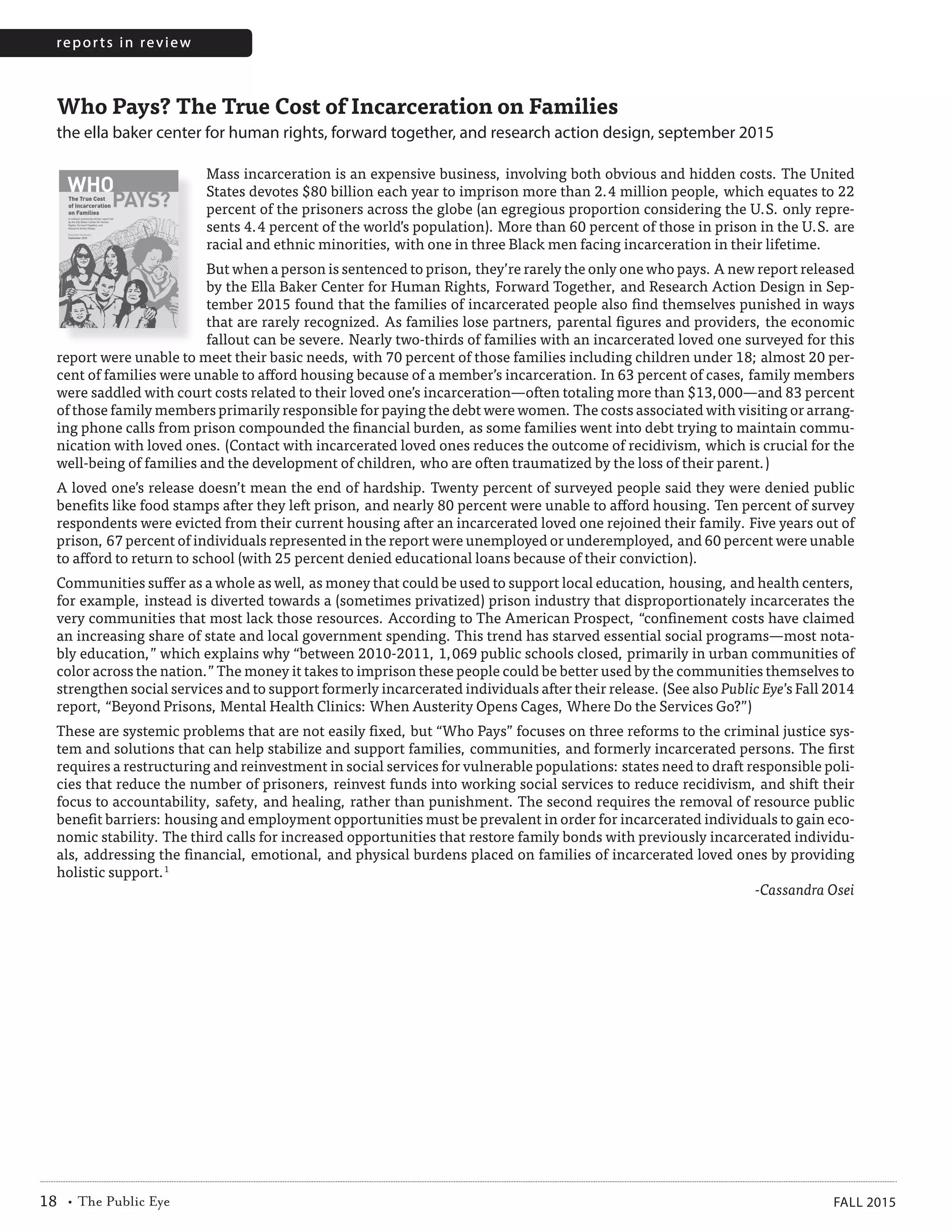The document discusses the high costs of mass incarceration in the United States, both financially and socially. The U.S. spends $80 billion annually to imprison over 2.4 million people, disproportionately people of color. In addition to incarcerated individuals, their families also suffer severe economic and social consequences. Families struggle to meet basic needs, pay excessive court costs, and maintain connections through expensive prison visits and calls. Formerly incarcerated people also face significant barriers to housing, employment, education, and public benefits. These costs are shouldered not just by individuals but by communities who are deprived of resources better spent on social programs. Reforms are needed to reduce incarceration and reinvest savings in social services and support for

